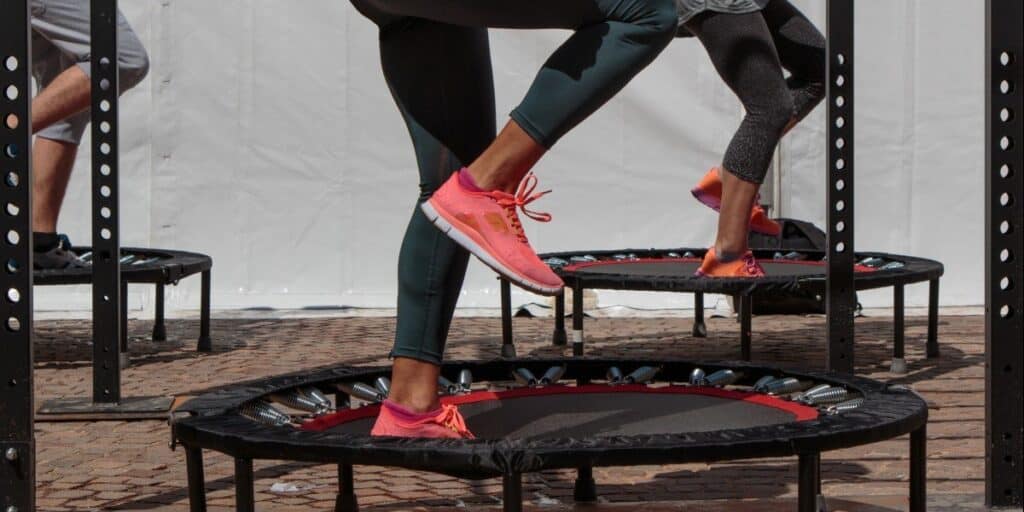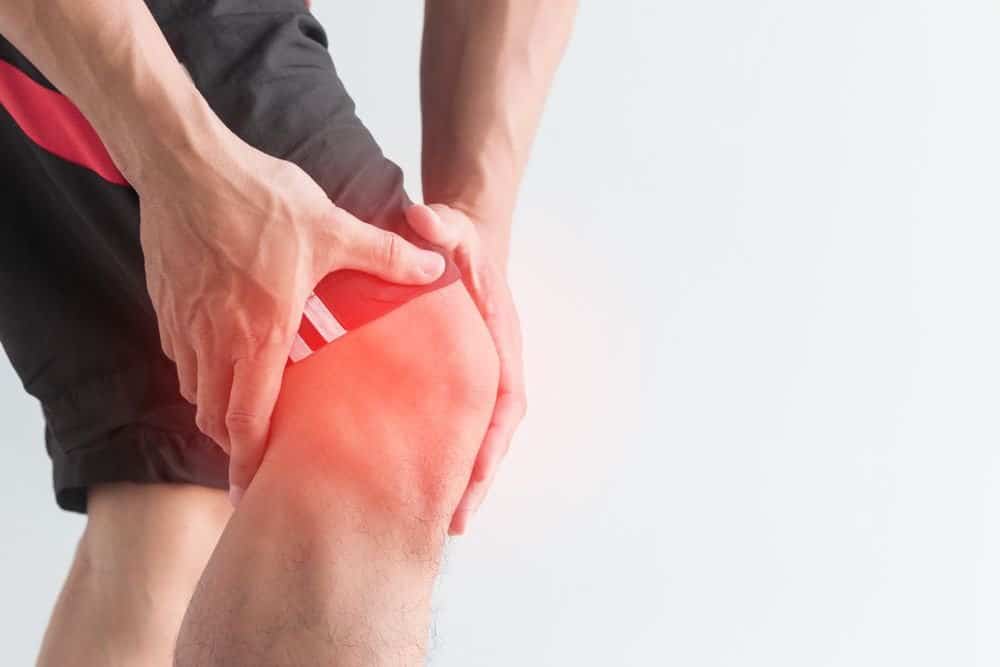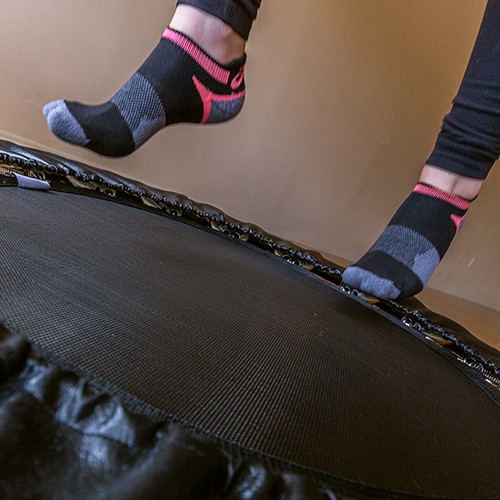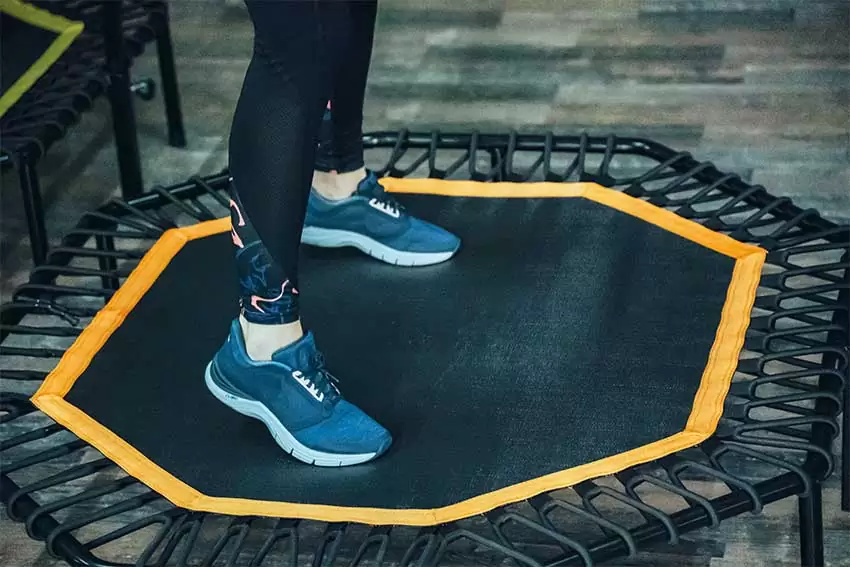Who Should Not Use a Rebounder
Rebounding is an aerobic exercise performed while jumping on a mini trampoline. This type of exercise helps increase endurance by recruiting the muscles in the legs.
This is a popular type of exercise because it’s easier on the joints while stepping and jumping, can strengthen your bones and works your cardiovascular system. Although it provides a number of benefits.
But Who Should Not Use a Rebounder? You should not use a rebounder if you are over 50 with any pre existing medical conditions such as a bad back, joint problems or poor circulation. If you have heart problems or health issues you should consult a medical practitioner before using a rebounder.
One group that is often debated is seniors but its actually perfectly safe for elderly to use if you have no underlying conditions. Check out this article on the best rebounders for seniors.
Lets dive into who should not use a rebounder.

Who should not use a rebounder?
I recommend that if you fall into the following category you should not use a rebounder:
- If you have pre-existing health issues such as heart problems or circulatory issues.
- If you have any issues with your back.
- If you suffer from joint pain in the knees or ankles.
As with any exercise equipment it’s advised to consult a doctor or healthcare practitioner if you are unsure if it is safe for you to use. While rebounders absorb force as you land it may still be too much of a load on your joints if they are weaker. If you have been cleared to use a rebounder, I’d recommend strapping up your ankle with this to provide extra support.
There are also some negative effects associated with them.
Safety tips for Rebounders
While rebounders are perfectly safe to use for most, there’s some safety features you should take into account. Firstly, make sure there is sufficient overhead clearance where you decide to place your rebounder.

Many rebounding exercises involve moving your legs and arms beyond the space of the rebounder. So ensure there is sufficient unobstructive space surrounding the trampoline.
While you jump up and down a few extra feet you need to make sure there is enough room to do so to avoid a head or neck injury. The same rule applies for any lateral movement.
Place the rebounder on a flat surface, if it’s placed on an elevated space it may move and wobble while in use. Most rebounders come with anti-slip rubber feet to keep it stable.
For extra safety you can use a non slip exercise mat to place under your rebounder:
Rebounding With or Without Shoes
It’s important that your feet are gripped to the mat of the rebounder securely while in use. Whether you plan to use shoes, socks or barefoot be sure your feet do not feel unstable before you begin your workout. If the rebounder is placed outside ensure it is dry and clean.

The rebounder was designed as an exercise platform, not as a piece of gymnastic equipment. Do not use the rebounder for any high jumping, flips or somersaults. Always come to a standstill before dismounting the rebounder, carefully step down to the floor rather than jumping off.
If you find that you are having trouble staying balanced while bouncing, consider purchasing a trampoline with a handlebar for extra stability and balance. Alternatively you can move your rebounder beside a wall, or put a heavy chair in front of it to hold on to to steady yourself should you need to.
A great product you can consider to maintain balance while using them is anti slip or grip socks:
How to Use a Rebounder Effectively
If you are new to rebounding, start slowly and build yourself up. You can start with 5 minutes so your muscle can adapt to the movement then increase the intensity and duration each session.
Rebounding engages a variety of muscles in the legs, if you are new to this exercise take a rest day in between sessions to give your body a chance to recover. It’s not uncommon for you to experience muscle ache after a few rebounding exercises, if this happens reduce the intensity as required and also be sure to fully stretch before and after.

Try to avoid pushing through discomfort or pain while rebounding, this may cause injury.
After your first few uses of the rebounder you may feel slightly lightheaded or dizzy. Your body needs time to adjust to this new type of exercise, but I would recommend stopping the workout if you feel faint, if these feelings persist consult your doctor.
Once you become consistent with the rebounding exercise I recommend using this daily for 20 – 30 minutes, if your fitness levels allow. If you are more time restricted, this can be broken up into smaller sessions throughout the day. Ultimately the most important thing with rebounding is to use it consistently and feel the benefits.
Final Thoughts
So now you know who should not use a rebounder. It’s suitable for most unless you have one of the pre-existing conditions mentioned above. It’s a great piece of entry level exercise equipment for all levels of fitness and ages.
Rebounding provides appealing benefits such as improved fitness levels, weight loss and even getting rid of cellulite.
If you are looking to jumpstart your fitness routine, get into rebounding!
An ex-triathlete, fitness coach and writer with a Masters in Sports Physiology. Fitness is my passion and I've had my fair share of home fitness equipment tried and tested!






One Comment